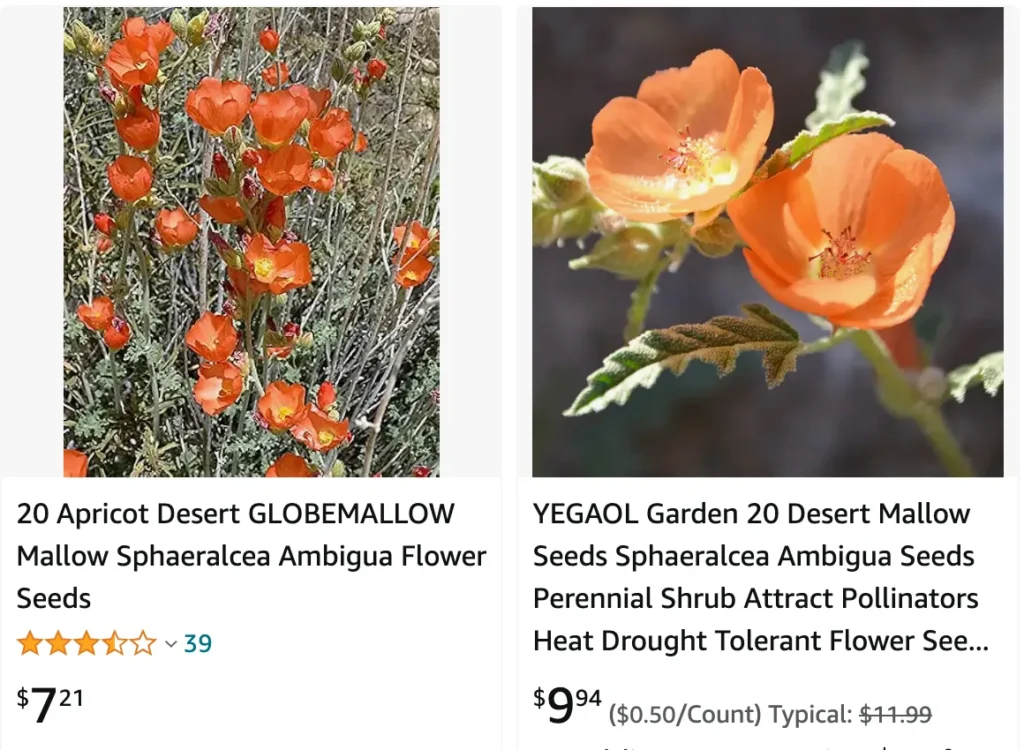
Top 100 Gift Ideas For Plant Lovers 2024
Introduction
As I wander through the arid landscapes of California, Nevada, Utah, Arizona, and New Mexico, I find solace in the company of a resilient companion, Sphaeralcea Ambigua, more affectionately known as desert globemallow or apricot mallow. This perennial shrub, belonging to the mallow family (Malvaceae), has become a fascinating subject of my botanical exploration, drawing me into its world of vibrant blooms and cultural significance. Join me on a personal journey as I delve into the captivating realm of Sphaeralcea Ambigua.
Encountering the Desert Gem
In the vast expanses of the Mojave Desert, Great Basin desert, and Sonoran Desert ecoregions, the apricot-hued blossoms of Sphaeralcea Ambigua paint a breathtaking portrait against the backdrop of sandy or clay soils. My first encounter with this resilient shrub left an indelible mark on my memory. As I traversed through desert chaparral habitats, the sight of the bowl-shaped, apricot to orange flowers in full bloom captivated my senses. According to my actual experience, these blossoms stand as resilient beacons in the harsh desert environment, attracting a myriad of winged visitors, including the common checkered skipper, northern white skipper, painted lady, small checkered skipper, and West Coast lady.

A Glimpse into Sphaeralcea Ambigua’s Persona
Standing proudly at a height of three feet, Sphaeralcea Ambigua spreads its branches to a width of 2–3 feet. The leaves, adorned with a delicate fuzziness and palmately veined, reveal the plant’s adaptability to the challenging desert conditions. My personal observations have unveiled the intriguing transformation of the fruit—a brown capsule initially spherical, echoing the genus name, only to later flatten into a disk. The blooming spectacle, which occurs in spring, presents a visual feast that lingers in my memory.
Varieties: A Kaleidoscope of Diversity
In my exploration, I’ve discovered the rich tapestry of Sphaeralcea Ambigua’s varieties, each with its unique charm. From the A. Gray var. ambigua to the rosacea and rugosa varieties, the diversity within this species is a testament to its ability to adapt and thrive across different terrains. According to my actual experience, these varieties showcase nature’s creativity, offering a spectrum of colors and forms that adds vibrancy to the desert landscape.
Cultural Connections and Practical Uses
Delving into the cultural heritage of the region, I uncovered the integral role Sphaeralcea Ambigua plays in the lives of Indigenous communities, particularly the Shoshoni tribe. As I learned, members of these tribes have long utilized the plant as both a food source and a medicinal remedy. The seamless integration of nature into their daily lives resonates with me, highlighting the reciprocal relationship between humans and the desert ecosystem.
Cultivation Adventures
Inspired by the plant’s resilience, I decided to bring the allure of Sphaeralcea Ambigua into my own space. Cultivating it as an ornamental plant, I embraced the challenge of nurturing a species adapted to desert conditions. My hands-on experience revealed that full sun exposure, natural rainfall, and well-draining desert soil are the keys to a thriving desert mallow. The periodic pruning required to maintain its vegetative look became a therapeutic ritual, reinforcing my connection with this hardy companion.
In My Garden: Desert Mallow Unveiled
Transforming my garden with the inclusion of Sphaeralcea Ambigua, I witnessed the magic of this multi-branched perennial shrub unfold. The clusters of brilliant orange-red flowers, ranging from apricot to lavender, brought a burst of color to my landscape. As I marveled at the honey bees and butterflies drawn to the rich source of pollen and nectar, I realized the profound impact this plant has on local pollinator populations.
Navigating Challenges and Celebrating Resilience
While Sphaeralcea Ambigua proved to be a relatively low-maintenance addition to my garden, it wasn’t without its challenges. Adapting to its preference for sharply-drained, gravel-rich soil tested my gardening skills. Yet, the resilience of this desert gem became evident as it withstood the harsh conditions, showcasing its ability to thrive in adversity.
Seeds, Harvest, and Propagation
Venturing into the realm of seed planting and propagation added a new layer to my journey with Sphaeralcea Ambigua. Following recommended practices, I planted the seeds in early spring, creating a weed-free seedbed to ensure optimal growth. The meticulous care required during the planting phase and subsequent irrigation unveiled the intricate dance between nature and cultivation.
Exploring Cultivars and Adaptation
As my fascination with Sphaeralcea Ambigua deepened, I explored cultivars like ‘Louis Hamilton TM,’ recognizing the active propagation of globemallows in the horticultural trade. The importance of selecting cultivars adapted to local climates became evident, and I found guidance from local experts to be invaluable in making informed choices for my garden.
Conclusion: A Living Tapestry of Desert Beauty
In conclusion, my journey with Sphaeralcea Ambigua has been a captivating exploration of nature’s resilience, cultural significance, and the joy of cultivating a desert gem in my own space. From the first awe-inspiring encounter in the desert to the hands-on experience of cultivation, every step has been a testament to the plant’s ability to thrive in adversity and bring beauty to its surroundings. As I continue to navigate the seasons with my desert mallow companion, I find solace in the ever-changing tapestry of colors and forms that Sphaeralcea Ambigua unfolds, enriching my connection with the desert landscape and its unique flora.



